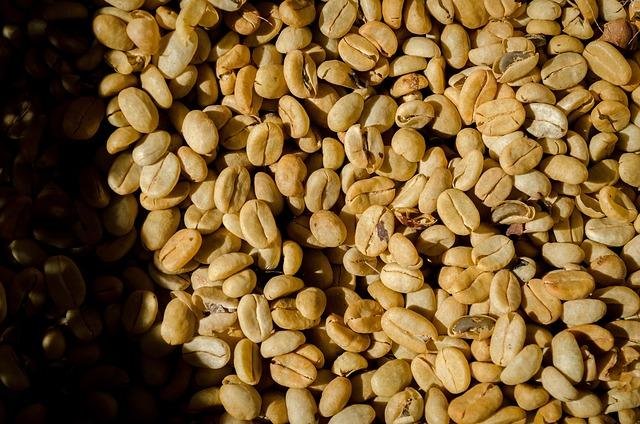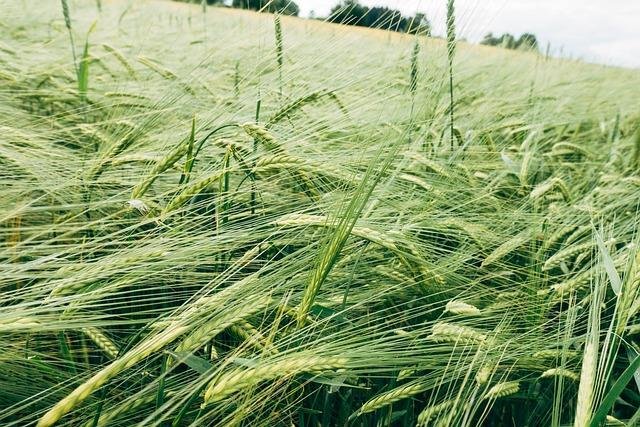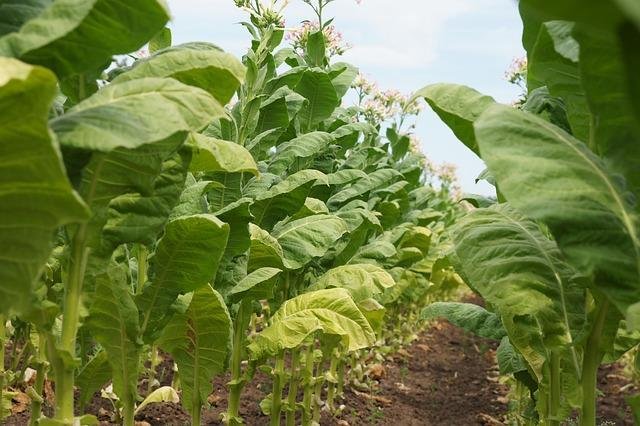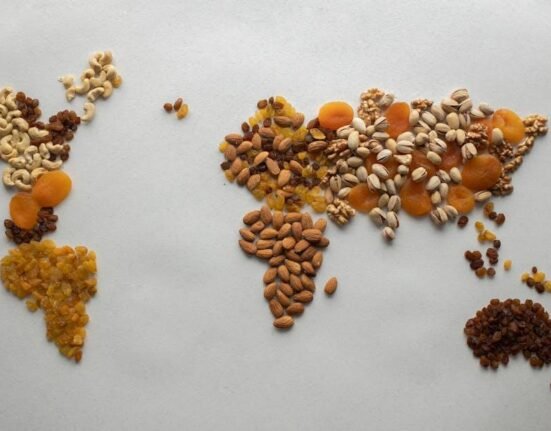In the vast and complex world of economics and public policy, food subsidies stand as a powerful but often misunderstood force shaping what ends up on our plates. From farm fields to supermarket aisles, these government interventions ripple through the food system, influencing prices, production, and even cultural tastes. But what exactly are food subsidies, who benefits from them, and what are the broader implications for society and the environment? This article embarks on a journey to unravel the layers behind food subsidies, aiming to provide a clear and balanced understanding of how they work, why they exist, and the debates swirling around their future. Whether you’re a curious consumer, a policy enthusiast, or someone simply hungry to know more, join us in exploring the economics of nourishment in today’s world.
Table of Contents
- The Role of Food Subsidies in Modern Economies
- How Food Subsidies Influence Agricultural Production
- Balancing Nutritional Goals with Economic Efficiency
- The Impact of Food Subsidies on Consumer Behavior
- Challenges and Controversies Surrounding Food Subsidies
- Strategies for Designing Effective and Equitable Food Subsidies
- Q&A
- Insights and Conclusions

The Role of Food Subsidies in Modern Economies
Food subsidies act as a powerful tool in stabilizing economies by making essential food items more affordable for the population, particularly for low-income families. They not only reduce the direct financial burden on consumers but also encourage agricultural productivity by providing farmers with financial support. This, in turn, helps maintain a steady supply of staple foods, ensuring food security and preventing extreme price volatility caused by market fluctuations or external shocks.
Governments implement food subsidies with varying objectives, which include:
- Promoting nutritional access: Ensuring people have access to a balanced diet.
- Supporting local agriculture: Boosting domestic food production and rural livelihoods.
- Controlling inflation: Keeping food prices stable to prevent economic disruption.
| Subsidy Type | Primary Benefit | Potential Drawback |
|---|---|---|
| Direct Cash Transfers | Targets low-income households | Possible misuse of funds |
| Price Support | Stabilizes food prices | Market distortion risk |
| Input Subsidies | Encourages agricultural production | Dependency on government aid |

How Food Subsidies Influence Agricultural Production
Food subsidies act as powerful drivers in shaping agricultural landscapes by providing farmers with financial relief and market stability. When governments offer monetary assistance, they reduce production risks, enabling farmers to experiment with new crops, invest in advanced technologies, or expand their fields. This intervention often leads to increased output of subsidized crops, influencing the overall supply chain and sometimes skewing the diversity of agricultural production toward favored staples. For example, subsidies on corn and wheat in many countries prioritize these grains, often at the expense of more nutrient-dense or climate-resilient crops.
The ripple effects of subsidies extend beyond quantity to impact farming decisions and sustainability practices. Farmers may lean into monoculture systems, driven by secure prices or guaranteed purchasing agreements, which can raise concerns about soil health and long-term ecosystem balance. Below is a snapshot of common consequences observed in subsidized agricultural sectors:
- Increased Production: Boost in output of subsidized crops.
- Market Distortions: Lower prices affecting non-subsidized farmers.
- Environmental Impact: Potential rise in chemical use and soil depletion.
- Reduced Crop Diversity: Focus on high-yield staples instead of varied crops.
| Subsidized Crop | Production Shift (%) | Environmental Note |
|---|---|---|
| Corn | +25% | High fertilizer use |
| Wheat | +18% | Soil erosion concerns |
| Soybean | +15% | Positive nitrogen fixation |

Balancing Nutritional Goals with Economic Efficiency
Achieving a harmonious blend between nutritional value and economic prudence is at the heart of effective food subsidies. Policymakers often face the challenge of devising assistance programs that not only make food affordable but also promote healthful eating habits. By prioritizing nutrient-dense foods in subsidy schemes, governments can encourage consumption patterns that reduce long-term healthcare costs associated with poor diets. This approach calls for a strategic focus on staples rich in vitamins, minerals, and fiber while keeping prices accessible for all socioeconomic groups.
Several factors shape this balancing act, including:
- Cost-efficiency: Ensuring subsidies deliver maximum nutritional benefits per unit of expenditure.
- Accessibility: Facilitating easy availability of subsidized foods across rural and urban areas.
- Cultural relevance: Aligning food assistance with traditional diets to enhance acceptance and reduce waste.
- Environmental impact: Supporting sustainable farming practices to safeguard future food security.
| Food Category | Subsidy Focus | Impact on Nutrition |
|---|---|---|
| Whole Grains | High | Improves fiber intake |
| Fruits & Vegetables | Moderate | Boosts vitamin diversity |
| Processed Snacks | Low | Minimal nutritional value |
| Legumes | High | Enhances protein access |

The Impact of Food Subsidies on Consumer Behavior
Food subsidies play a pivotal role in shaping consumer choices by directly influencing the affordability of essential items. When governments lower the cost of staple foods through subsidies, consumers are often encouraged to purchase more of these subsidized products, which can lead to increased consumption patterns that might not occur in an unsubsidized market. This intervention not only alleviates financial pressure on households but can also shift dietary preferences toward subsidized goods, sometimes at the expense of more diverse or nutritious options.
Subsidies impact consumer behavior in several key ways:
- Price Sensitivity: Lower prices make certain foods more attractive, leading to higher demand.
- Consumption Patterns: Consumers may buy in bulk or increase frequency of purchase due to cost savings.
- Market Distortions: Subsidized foods can overshadow local products or healthier alternatives, affecting long-term market dynamics.
| Effect | Consumer Behavior | Potential Outcome |
|---|---|---|
| Lower Prices | Increased purchase volume | More affordable access to staples |
| Focused Spending | Preference for subsidized items | Reduced dietary diversity |
| Market Competition | Displacement of non-subsidized foods | Restricted consumer choices |

Challenges and Controversies Surrounding Food Subsidies
While food subsidies aim to make essential commodities more affordable, they often spark intense debate due to their complex economic and social ramifications. Critics argue that subsidies can distort market prices, leading to overproduction of certain crops and underinvestment in others. This imbalance not only affects farmers’ income diversity but can also exacerbate environmental degradation through monoculture practices and excessive use of fertilizers. Additionally, subsidies sometimes disproportionately benefit large agribusinesses rather than small-scale farmers, raising concerns about equity and the true reach of these financial supports.
Moreover, the long-term sustainability of food subsidy programs faces significant challenges. Governments must balance budget constraints with the need to ensure food security, often resulting in fluctuating subsidy levels that create uncertainty for producers and consumers alike. Below is a quick overview of common controversies:
- Market Distortion: Artificially low prices can disrupt supply and demand dynamics.
- Fiscal Burden: High costs strain public finances, limiting funds for other social services.
- Inequitable Distribution: Larger entities may capture more benefits, sidelining vulnerable farmers.
- Environmental Impact: Encouragement of monoculture can harm biodiversity and increase pollution.
| Issue | Impact | Stakeholders Affected |
|---|---|---|
| Subsidy Misallocation | Unequal access to benefits | Small Farmers, Consumers |
| Budget Deficit | Reduced public investment | Taxpayers, Government Services |
| Market Intervention | Price volatility | Farmers, Retailers |
| Environmental Exploitation | Soil degradation, pollution | Local Communities, Ecosystems |

Strategies for Designing Effective and Equitable Food Subsidies
Crafting food subsidies that truly serve the community requires a multi-faceted approach centered on transparency, inclusivity, and sustainability. One of the key strategies involves identifying and targeting the most vulnerable populations to ensure the subsidies reach those who need them most. This can be achieved through data-driven allocation methods that consider income levels, geographic location, and nutritional needs. Additionally, incorporating community feedback loops allows policymakers to adjust programs dynamically, promoting continuous improvement and public trust. Collaboration with local producers not only supports the local economy but also reduces supply chain disruptions, making food more accessible and affordable.
Equity in food subsidies can be further enhanced by adopting tiered subsidy models, where the level of support varies based on specific criteria such as household size or health risks. Integrating educational campaigns alongside subsidies empowers recipients to make nutritious choices, amplifying the benefits of the financial aid. To streamline implementation and monitoring, digital platforms with user-friendly interfaces can be deployed, enabling real-time tracking and minimizing fraud. Below is a concise overview of effective strategies:
- Data-Driven Targeting: Precision in identifying subsidy recipients
- Local Producer Engagement: Strengthening regional food systems
- Tiered Subsidies: Customizing support intensity
- Educational Outreach: Promoting nutritional literacy
- Digital Monitoring: Enhancing transparency and efficiency
Q&A
Q&A:
Q1: What exactly are food subsidies?
A1: Food subsidies are financial aids or support provided by governments to reduce the cost of food production, distribution, or consumption. They aim to make staple foods more affordable and accessible, often supporting farmers, food manufacturers, or consumers directly.
Q2: Why do governments implement food subsidies?
A2: Governments use food subsidies to achieve several goals: ensuring food security, stabilizing food prices, supporting struggling farmers, and reducing hunger and malnutrition among vulnerable populations. Subsidies can also encourage the production of specific crops vital to a country’s diet or economy.
Q3: How do food subsidies impact farmers?
A3: Subsidies can help farmers by lowering their production costs, guaranteeing minimum prices for their crops, or providing financial incentives to grow certain food items. This support can lead to increased agricultural productivity and rural development, though it may sometimes distort market dynamics.
Q4: Are there any downsides to food subsidies?
A4: Yes. While subsidies have benefits, they can also lead to market distortions, overproduction, and environmental damage. They may encourage dependence on government support, discourage innovation, or favor large-scale farmers over smallholders. Additionally, subsidies can strain government budgets if not managed carefully.
Q5: How do food subsidies affect consumers?
A5: Consumers often benefit from food subsidies through lower prices on essential goods, making nutritious food more accessible, especially in low-income communities. However, subsidies that focus on specific foods might limit dietary diversity or promote less healthy eating habits.
Q6: Can food subsidies influence global trade?
A6: Definitely. Subsidies in one country can impact international markets by making exports cheaper or creating unfair competition. This can affect farmers and consumers in other countries, sometimes leading to trade disputes or calls for reform in global trade regulations.
Q7: Are there alternative approaches to food subsidies?
A7: Alternatives include targeted cash transfers to needy families, investments in agricultural technology, or policies that promote sustainable farming practices. These strategies aim to improve food security and farmer livelihoods without some of the downsides associated with traditional subsidies.
Q8: In a nutshell, why is understanding food subsidies important?
A8: Food subsidies shape the economics of food production and consumption globally. Understanding them helps consumers, policymakers, and farmers make informed decisions about food security, economic fairness, and environmental sustainability—key ingredients for a balanced food future.
Insights and Conclusions
In the intricate web of food subsidies, what begins as a simple policy to ease the burden of feeding a nation unravels into a complex dance of economics, ethics, and environmental impact. Understanding food subsidies means peeling back the layers to see beyond the price tags at our local markets, revealing the unseen forces shaping what ends up on our plates. As we move forward, recognizing these hidden currents empowers us to engage more thoughtfully with the food systems that sustain us all. After all, appreciating the true cost—and benefit—of our food subsidies is a key step toward nourishing not just ourselves, but the world we share.










Leave feedback about this